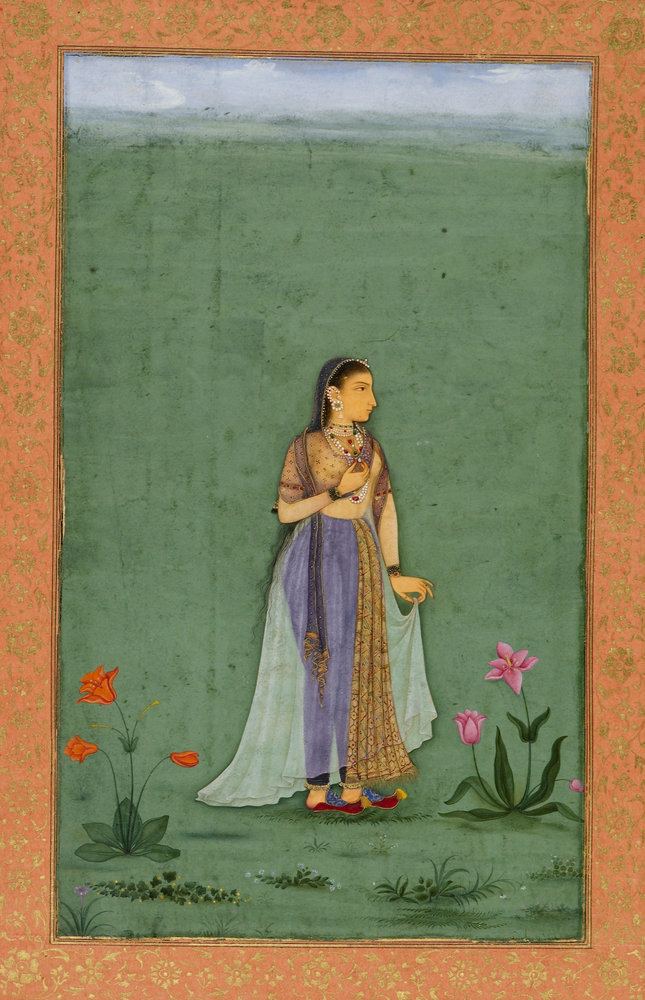Father Sultan Parvez Mirza Role Dara Shikoh's wife Mother Iffat Jahan Banu Begum Parents Muhammad Parviz | Religion Sunni Islam Grandchildren Bidar Bakht Name Nadira Begum | |
 | ||
Burial Tomb of Nadira Begum, Lahore, Pakistan Issue Sulaiman Shikoh
Mumtaz Shikoh
Sipihr Shikoh
Jahanzeb Banu Begum House House of Timur (by birth and marriage) Died June 6, 1659, Balochistan, Pakistan Spouse Dara Shikoh (m. 1633–1659) Children Jahanzeb Banu Begum, Sulaiman Shikoh, Sipihr Shikoh, Mumtaz Shikoh Grandparents Jahangir, Sahib-i-Jamal Begum Similar People Dara Shikoh, Sulaiman Shikoh, Bidar Bakht, Jahangir | ||
Nadira Banu Begum (14 March 1618 – 6 June 1659) was a Mughal princess and the wife of Crown prince Dara Shikoh, the heir-apparent to the fifth Mughal emperor Shah Jahan. After Aurangzeb's rise to power, Dara Shikoh's immediate family and all of his supporters were in grave danger. Nadira died in 1659, several months before her husband's execution, and was survived by two sons and a daughter.
Contents
Family and lineage
Nadira Banu Begum was born a Mughal princess and was the daughter of Mughal prince Sultan Parvez Mirza, the second son of Emperor Jahangir and his wife, Sahib-i-Jamal Begum. Her mother, Jahan Banu Begum, was also a Mughal princess being the daughter of Sultan Murad Mirza, the second son of Emperor Akbar. Nadira was thus, of the most exalted lineage being a Timurid both from her maternal and paternal side.
Nadira's paternal uncle was Emperor Shah Jahan, who later became her father-in-law as well. Nadira Bagum was considered to be rather beautiful, and considerably intelligent. Her husband-to-be was reportedly eager for the marriage and they had a good relationship throughout his turbulent life.
Marriage
The marriage was originally arranged when the couple were both teenagers, by Dara's mother, Empress Mumtaz Mahal. When the Empress died in 1631 with the birth of her last child, Gauharara Begum, the wedding arrangements halted as the Mughal Empire plunged into mourning and Shah Jahan was consumed in his grief. After much coaxing by many, including his favorite daughter Jahanara Begum, he resumed life as normal and let her oversee the remaining aspects of the wedding.
Nadira married her first cousin, Dara Shikoh, on February 1, 1633 at Agra; midst great celebrations, pomp and grandeur. The nikah ceremony was performed after midnight. By all accounts, Nadira and Dara were both devoted to each other, and Dara's love for Nadira proved to be even more faithful than that of Shah Jahan for Mumtaz Mahal — for unlike his father, he never contracted any other marriage.
Nadira Begum emerges in Mughal chronicles as being no less beautiful than her mother-in-law, and perhaps just as courageously loyal. She bore her husband seven children, with two sons, Sulaiman Shikoh and Sipihr Shikoh and a daughter Jahanzeb Banu Begum, surviving to play important roles in future events. Within two years of their marriage, in 1635, the handsome Sulaiman Shikoh was born; another son Sipihr Shikoh would follow in 1644 and a daughter Jahanzeb or affectionately known as Jani Begum, was born sometime afterwards.
Nadira and Jahanara Begum, her cousin as well as sister-in-law, were said to have gotten on well; a fact which probably sprung from Jahanara’s involvement in her wedding and her closeness to her brother. Jahanara had consciously decided to support Dara, the most beloved to her of all of her siblings, over Aurangzeb, and she made outward demonstrations of this decision.
According to legend, Aurangzeb had fallen sick sometime during his teen years. It was at this time he called Jahanara in. He then asked her outright if she would support him in his bid for the crown. She refused. Despite how unpopular this must have made her in his sight, and her undying loyalty to her brother Dara, she went on to become the head of the harem in Aurangzeb’s court.
Jahanara’s outward declarations of love for her eldest brother no doubt strengthened the relationship between herself and his wife, and when she died, she left the cream of her fortune to one of the daughters Nadira had borne him.
Dara Shikoh was said to be a fine painter, and many of his works, when criticized, were considered to be almost of a professional standard. Some of his works were collected and gifted to Nadira Banu, and it was a token of her affection for him that she cherished it until her death, when it went on display at a museum.
Issue
Together with Dara Shikoh, Nadira Banu had seven children. They were:
Death
Nadira Begum died on 6 June 1659 of dysentry while she was accompanying her husband and family at Balochistan. She had been faithful and devoted to her husband during the hardships in his life and had shared in all his wanderings. Her death drew Dara into such a frantic state of grief that his own fate appeared a matter of indifference to him.
Nadira's last wish was to be buried in India, and without considering the consequences of her request, Dara sent his deceased wife's corpse to Lahore in charge of his soldiers to be buried there. The princess' tomb was built next to Mian Mir's tomb in Lahore, Pakistan, who had been the spiritual instructor of Dara Shikoh.
